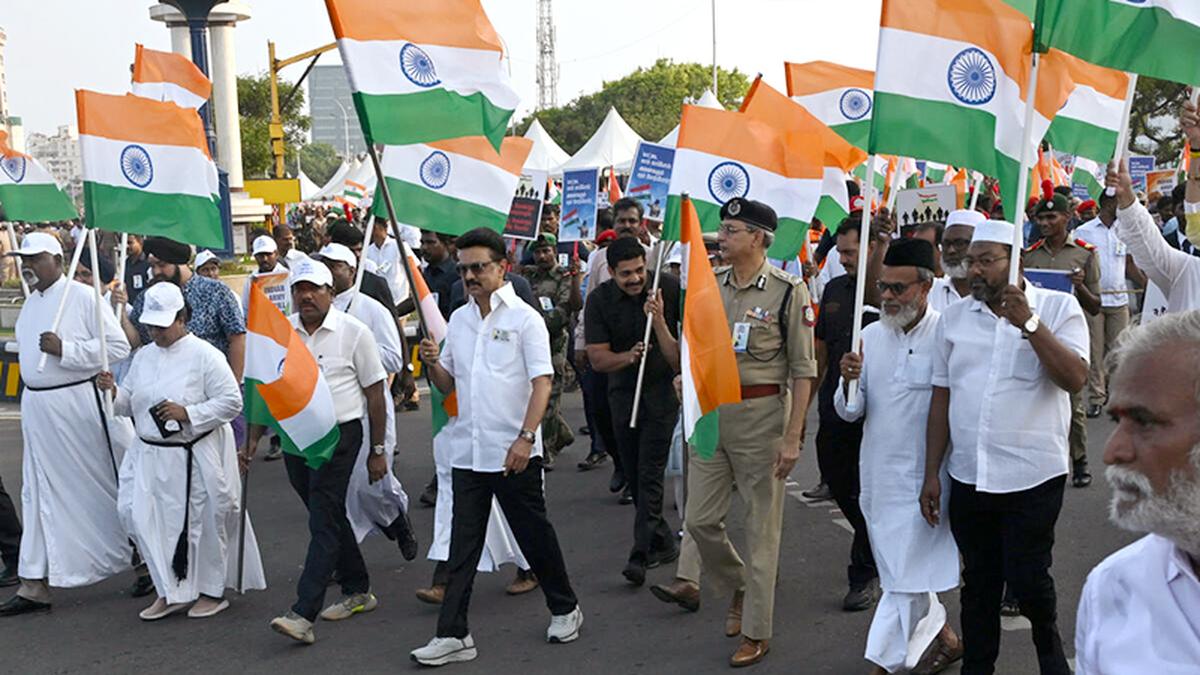
DGMO Lieutenant General Rajiv Ghai, Air Marshal A.K. Bharti, Vice Admiral A.N. Pramod and Major General S.S. Sharda during the press conference on ‘Operation Sindoor’, in New Delhi on May 12, 2025.
| Photo Credit: ANI
While consenting to continue the commitment that both sides must not fire a single shot or initiate any aggressive and inimical action, India and Pakistan on Monday (May 12, 2025) agreed that both sides “consider immediate measures to ensure troop reduction” from the borders and forward areas, the Army said.
This was agreed during the talks between the Director-Generals of Military Operations (DGMOs) of the two countries that were held on the established hotline at 5 p.m. “Issues related to continuing the commitment that both sides must not fire a single shot or initiate any aggressive and inimical action against each other were discussed,” the Army said.
India-Pakistan ceasefire LIVE | Follow the Updates on May 12, 2025
This effectively takes forward the understanding reached between the DGMOs on May 10 to stop all firing and all military activity that came into effect at 5 p.m. later that day. While that was violated by Pakistan within few hours, guns fell silent and the skies remained devoid of drones on Sunday (May 11, 2025) night, the Army confirmed.
Earlier in the day, Air Marshal A.K. Bharti, Director General Air Operations (DGAO), underscored that “in spite of some minor damage incurred during Operation Sindoor, all our military bases and systems continue to remain fully operational, and ready to undertake any further missions, should the need so arise.”
The three Directors General (Operations) underscored how the country’s Air Defence (AD) grid functioned seamlessly to shoot down the waves and waves of incoming drones, loitering munitions and missiles launched by Pakistan between May 7 and 10. “I would like to highlight again that in every single domain that Operation Sindoor has been prosecuted, there has been total synergy between the three Services,” noted Lt. Gen. Rajiv Ghai, Director General Military Operations.
The DG, Naval Operations, Vice Admiral A. N. Pramod said their powerful Carrier Battle Group (CBG) with formidable offensive capability was able to operate “with impunity and maintained an uncontested presence” in the area of operations. “Effectively it compelled the Pakistani air elements to remain bottled up close to the Makaran coast, denying any opportunity to be a threat in maritime space.”
Air Marshal Bharti delved into how the Indian armed forces managed to minimise the damage to both civilian and military infrastructure in the country, in spite of the unrelenting efforts by the Pakistani forces. In this regard, noting that while much has been said and written about the newer systems, the DGAO highlighted the performance and efficacy demonstrated by even the older and battle-proven AD weapons such as the Pechora, OSA-AK and the L-70, Zu 23 mm and Schilka guns in countering the Pakistani threat vectors in the current operations.
Another highlight has been the stellar performance of indigenous AD weapons such as the Akash surface-to-air missile system, he stated. “I would like to also mention that, putting together and operationalisation of this potent AD environment has been possible over the last decade, due to unwavering budgetary and policy support provided by the government in acquiring state-of-the art equipment and weapon systems,” he said.
Maritime surveillance
Further on the Navy’s role, Vice Admiral Pramod said that in the current stand-off, the presence of the aircraft carrier with large number of Mig-29K fighters and air-borne early warning helicopters “prevented any suspicious or hostile aircraft to close the CBG within several hundred km.”
“Over the past few years, and most importantly immediately after the cowardly incident by Pakistan-sponsored terrorist attack at Pahalgam, we had validated our anti-missile and anti-aircraft defence capability in a complex threat environment using a cross-platform cooperative mechanism,” the officer said. “The Indian Navy maintains a credible capability to detect, identify and neutralise any aerial platforms that threaten our units at sea,” he added.
Published – May 12, 2025 10:25 pm IST



Leave a Comment